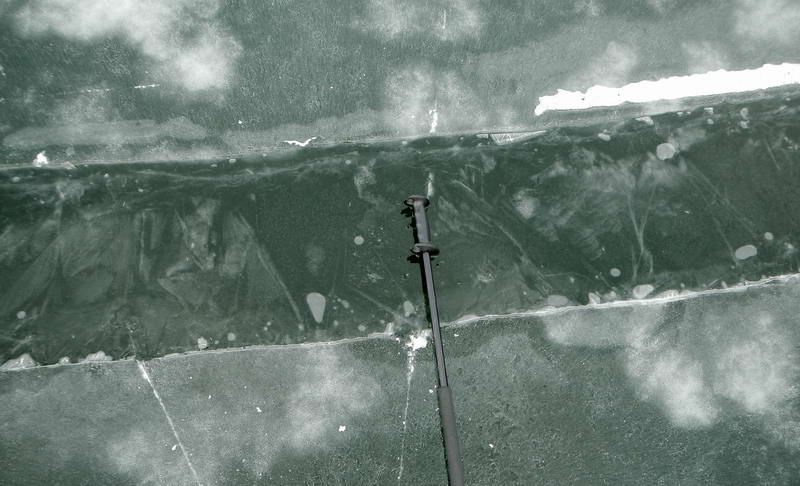Transverse Cracks
Summary: A folded ridge occasionally terminates and restarts as a second folded ridge that is offset from the first. There is often a passage between between the two ridges that makes crossing the ridge much easier however they generally have a wide wet crack across the passageway between the two ridges. This crack is called a Transverse Crack.
This sketch shows the layout of a folded ridge that started from Coates Island (Inner Maletts Bay, VT) in January 2012. After growing out a couple hundred feet it stopped and the the offset ridge formed, providing a way through the ridge system.
 The wide (15") end of a transverse crack with a thin layer of overnight ice. It connects two folded ridges about 150 feet apart.
The wide (15") end of a transverse crack with a thin layer of overnight ice. It connects two folded ridges about 150 feet apart.
Detail: Folded ridges are often hard to cross as they uniformly have a deep puddle over the two downward folded plates. One way around the ridge system is to go around the end of one ridge, up the ice between them and around the end of the other ridge (see first image above). There will be tectonic cracks off the end of each ridge and those cracks may be frozen or open. The tectonic cracks typically run approximately in the same direction as the ridge they are associated with.
Somewhere along the 'in between' ice where the ridges overlap there will be a wide, often wet crack that runs from one ridge to the other (the transverse crack). This crack typically tapers along its length with the wide end often being a foot or more wide. For people on foot and skates this is a step-through hazard. For an iceboat it may be wide enough to catch a runner. Sailing through the zig-sag path could be dangerous in any but the lightest winds. As always, it is better to walk the boat through areas like this (with the sail down if it is windy).
Bob
January 2013
